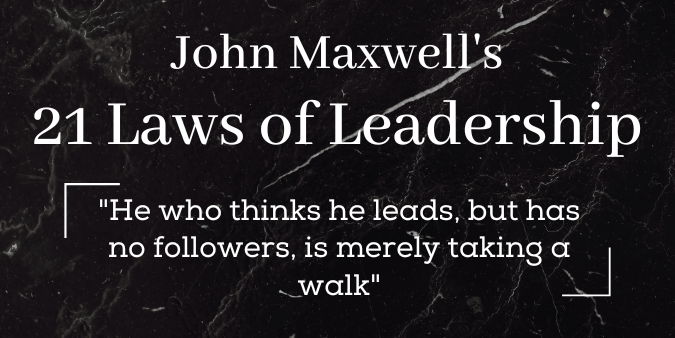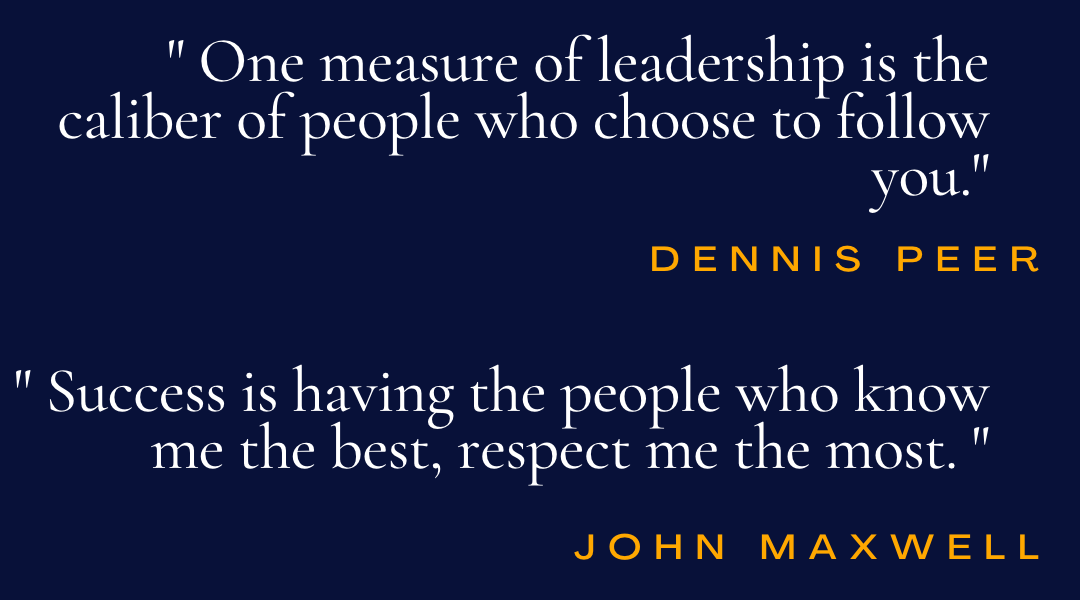#17 The law of Priorities – Leaders understand that activity is not necessarily accomplishment
No matter the size of your organization or past success, leaders must continue to prioritize what is important to achieve their goals. The goal is to satisfy multiple priorities with each activity which increases focus while reducing activity. Therefore, you achieve more with fewer actions. John Wooden, the former head basketball coach of UCLA, was an expert at focusing on priorities through his thoroughly planned practices. He studied the economy of motions and meticulously planned every moment of practice Wooden’s planning allowed him to improve multiple priorities with each exercise. Because of this, he never scouted opposing teams. His focus remained solely on maximizing his players potential. Wooden’s career included four undefeated seasons and ten NCAA championships. So why is it difficult to prioritize? First, we mistake being busy with achieving. Second, leaders must continually think ahead, consistently focusing on the overall vision. Third, prioritizing requires difficult decisions, sacrifice, and discomfort. Maxwell says that each year he takes two weeks in December to “look at the big picture of what I’m doing to make sure the way I’m living aligns with my values and priorities.” A guiding principle Maxwell uses during this evaluation is the Pareto Principle which is the idea that “if you focus your attention on the activities that rank in the top 20 percent in terms of importance, you will have an 80 percent return on your effort.”
He also uses the Three R’s to evaluate his priorities: Requirement, Return, and Reward.
Leaders must order their lives according to these:
1. What is required of me? – meaning activities that must be done by me alone and cannot be delegated.
2. What gives the greatest return? – you get your greatest return from efforts when they are within areas of your greatest strengths and natural gifts. Maxwell notes, “because you can do something does not mean that you should do i.t”
3. What brings the greatest reward? - focusing your attention on the areas of greatest satisfaction, on what you love to do, should be a priority.
#18 The Law of Sacrifice – a Leader must give up to go up
No success can be achieved without significant sacrifice by oneself. The future benefit of this sacrifice may not be seen by the leader. Martin Luther King, Jr. made significant sacrifices as the leader of a movement, including the ultimate sacrifice of his life for the cause of gaining civil rights for African Americans in the 1960s. The more he succeeded on this mission, the “greater the price he paid,” including being stoned, stabbed, and attacked. Along the way, his vision & influence grew. He was ultimately assassinated for this cause, sacrificing everything. Yet as he pursued.
While many believe that leadership is about power, position, and perks, the true essence of good leadership is sacrifice, not personal gain. For good leadership, you must understand the following about the Law of Sacrifice:
1. There is no success without sacrifice – whether attending graduate school, working 10,000 hours on a craft, or parents sacrificing for their children, a significant amount of sacrifice is evident in achieving greatness.
2. Leaders are often asked to give up more than others – Opportunities are passed over, hobbies are neglected, and in MLK Jr.’s instance, a life was lost.
3. You must keep giving up to stay up – leadership requires continued sacrifice, and what gets you to the top is not what keeps you there. Maxwell notes, “Leadership success requires continual change, constant improvement, and ongoing sacrifice.”
4. The higher the level of leadership, the greater the sacrifice – a leader’s sacrifice is magnified as the position is elevated.
Time is a commodity, and it must be used wisely as you make trade-offs to pursue your goals.
#19 The Law of Timing – when to lead is as important as what to do and where to go
The common adage of ‘Timing is Everything’ cannot be understated because the consequences are often dramatic and immediate. An example of poor timing can be seen at most steps during the natural disaster of Hurricane Katrina. From Mayor Nagin to President George W. Bush, the law of timing was violated continually. It was not declared an “Incident of National Significance” early enough, and the mayor enacted a mandatory evacuation of New Orleans with less than 24 hours before landfall. Maxwell summarizes stating, “if the leaders had paid greater attention not only to what needed to be done but also to when it needed to be done, many more lives would have been saved.”
Timing is often the difference between success and failure. When action is taken there can be 4 outcomes:
1. The wrong action at the wrong time leads to disaster – Followers will suffer the failure when this occurs, and if this happens more than once, they will soon doubt the leaders ability.
2. The right action at the wrong time brings resistance – this resistance may result in the action being unsuccessful. Good timing requires understanding, maturity, confidence, decisiveness, experience, intuition, and preparation.
3. The wrong action at the right time is a mistake – because of this, leaders must know when to cut losses and change course.
4. The right action at the right time results in success – when this happens, success can become almost inevitable, causing an organization to achieve its goals and grow momentum.
#20 The Law of Explosive Growth – to add Growth, Lead followers – To multiply, lead leaders
Being able to recruit & train followers is essential to any organization, but developing leaders within your team is the way to obtain exponential growth. It has a multiplication effect on your success. Maxwell summarizes with the following comparisons:
Leaders who attract followers… need to be needed
Leaders who develop Leaders… want to be succeeded
Leaders who attract Followers… develop the bottom 20%
Leaders who develop Leaders… develop the top 20%
Leaders who attract Followers… focus on weaknesses
Leaders who develop Leaders… focus on strengths
Leaders who attract Followers… treat everyone the same
Leaders who develop leaders… treat individuals differently
Leaders who attract Followers… spend time with others
Leaders who develop leaders… invest time in others
Leaders who attract followers… Grow by addition
Leaders who develop Leaders… Grow by multiplication
Leaders who attract Followers… Impact only people they touch
Leaders who develop leaders… Impact people beyond their reach
It is difficult to develop leaders, requiring time, energy, and resources. The reasons include:
1. Leaders are Hard to Find
2. Leaders are Hard to Gather
3. Leaders are Hard to Keep
#21 The Law of Legacy – a Leader’s Lasting Value is Measured by Succession
Though the last of the 21 laws, it may be the most important to constantly consider. What do you want to leave behind in this world after you’re gone? Things do not carry on our work, but people do, so training those to continue the work leaders have begun is how a legacy is left.
This is how to do it:
1. Know the Legacy you Want to Leave – you need to live proactively, seeking your goal & bestowing it in others as leaders as well. Maxwell summarizes by pointing out that “Someday people will summarize your life in a single sentence. My advice: pick it now!”
2. Live the Legacy you want to leave – even to become a leader, but even more so, hope to leave a lasting legacy; you must gain & sustain credibility by practicing what you believe.
3. Choose who will carry on your legacy – People are the conduit of a legacy, not things. Max De Pree, author of Leadership is an Art, states, “ Succession is one of the key responsibilities of leadership.”
4. Make sure you pass the baton – in a relay race, the exchange zone where runners pass the baton is the most critical part of the race. Speed can become inconsequential with a blundered exchange. And this is true with a legacy. If the succession plan is not well planned and administered, the legacy will die.
In any endeavor, true success depends solely on the team’s leadership abilities. As you build your organization, remember this:
Personnel determines the potential
Relationships determine the morale
Structure determines the size
Vision determines the direction
Leadership determines the success










































